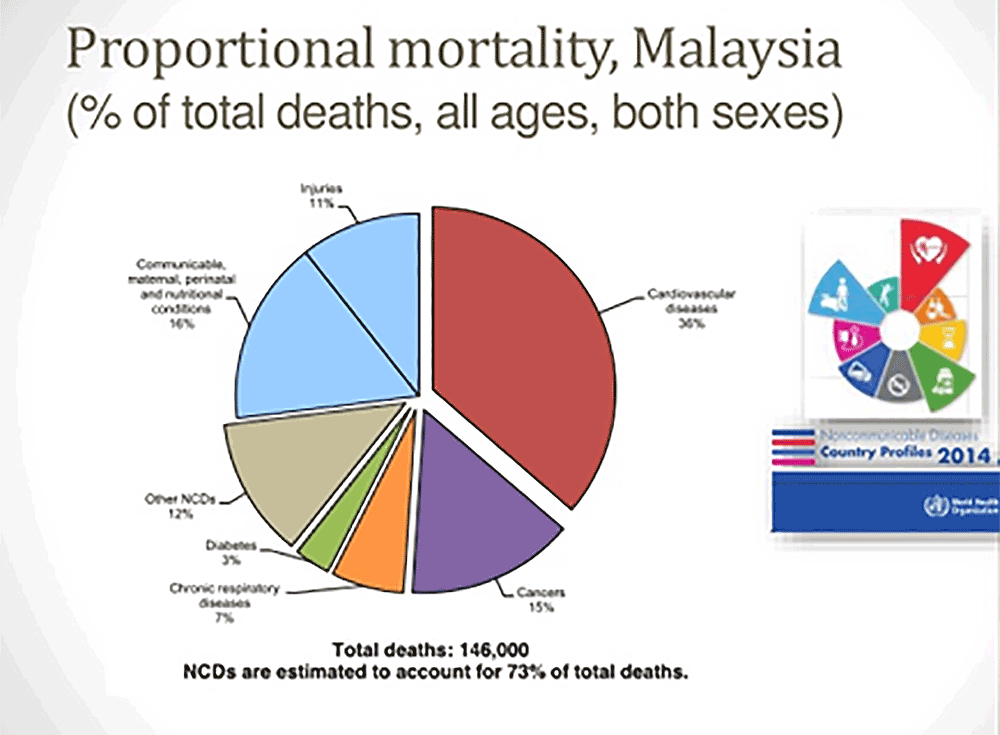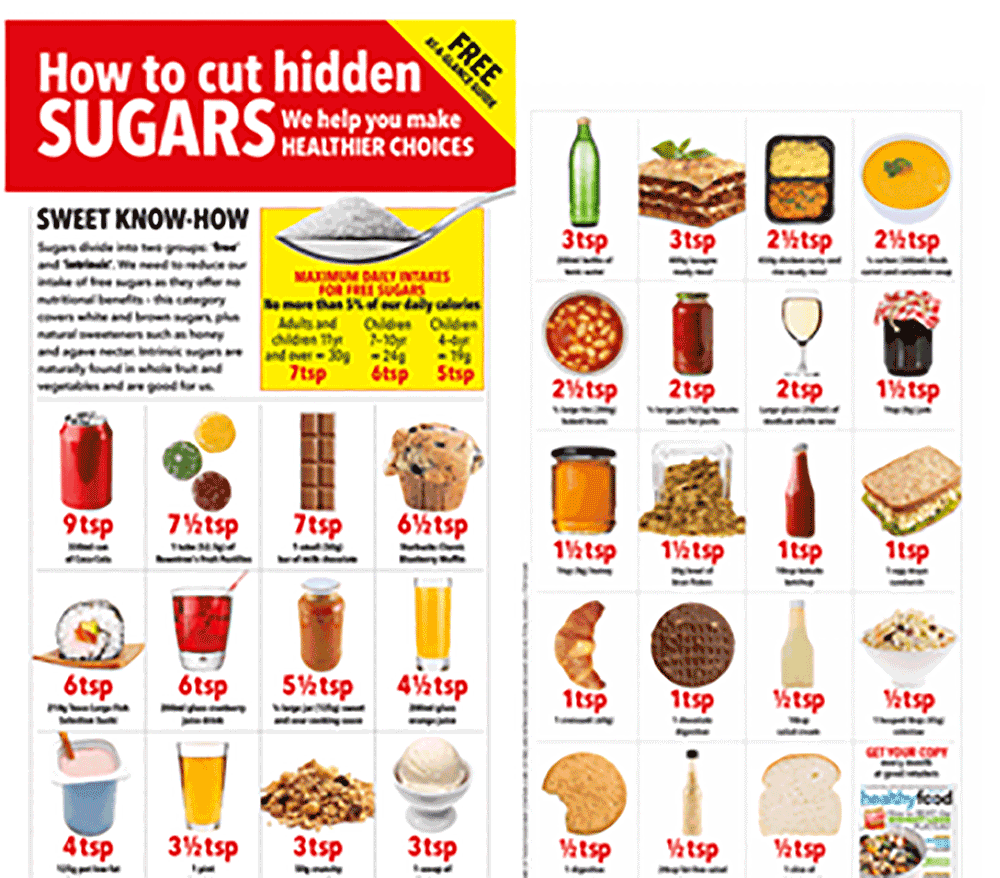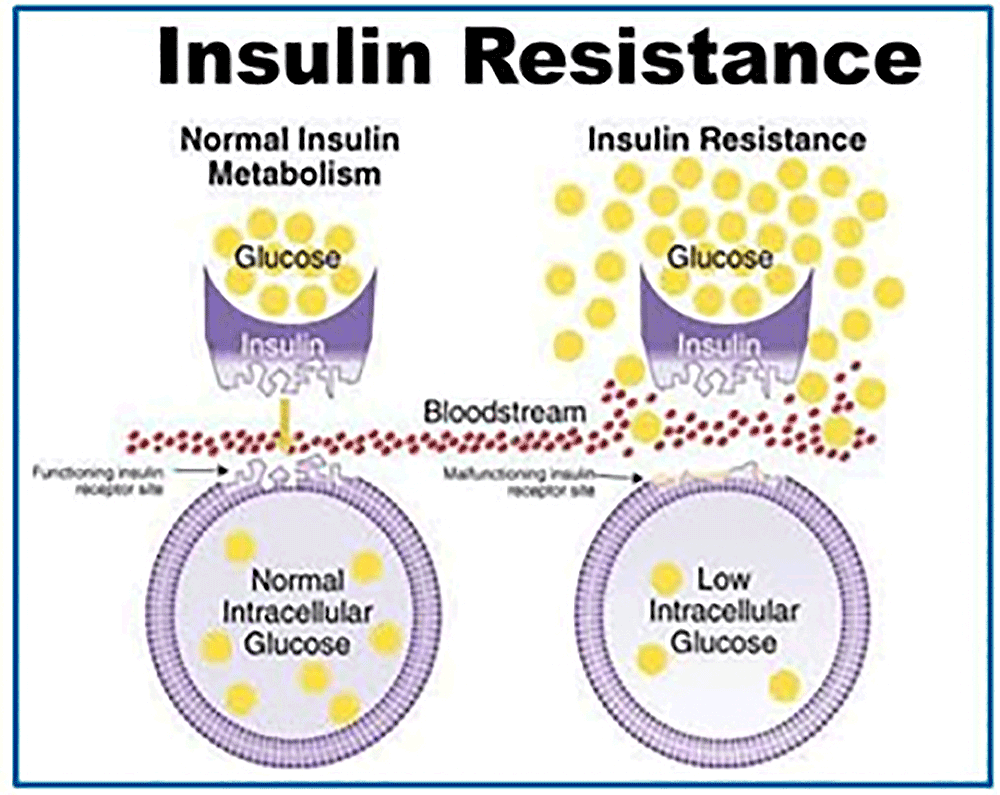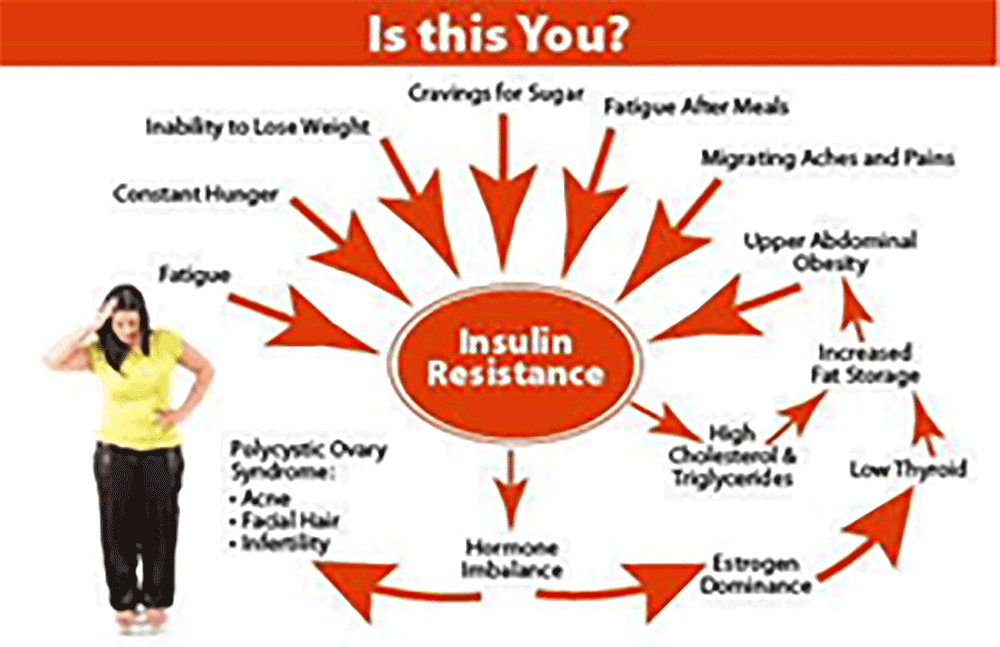COMMENT | Non-communicable diseases (NCD) are the largest cause of death globally. It is estimated that about 41 million people die annually and about a third of these deaths are in the workforce, in the 30-69 years age group. Records for 2015 shows that two out of every three Malaysians have at least one of the three major NCD and the figure is rising. A large part of our Malaysian healthcare budget is spent on managing NCD.
Identifying smoking and sugar as two of the major risk factors for NCD, the new government of Malaysia has quickly brought in a “sugar tax” and a “smoking ban.”
Let me begin by defining non-communicable diseases. As the name implies, non-communicable diseases are defined as chronic diseases that are not communicable. This then would include cancers, chronic lung diseases and in certain communities, nutritional deficiencies and not just cardiovascular diseases and diabetes mellitus.

For the purpose of simplicity, here I will concentrate on the harmful effects of sugars on NCDs mainly circulatory diseases. However, we must not forget that the harmful effects of sugar include dental caries, which may act as a precipitating cause for heart attacks.
The journey of sugar
The sugar in our bloodstream is mainly glucose, which is the result of dietary carbohydrate breakdown in our digestive system. Few of us take much naked sugars. But we do eat a fair share of carbohydrates (starch) and also forms of food with hidden sugars, like ketchup.

We all love sweets, especially children. When we have something sweet, we want more of it. Try keeping a child away from sweets. Sugar in our bloodstream, when it circulates to the brain, causes the release of dopamine, in the nerve endings of the brain. Dopamine receptor stimulation results in a sense of gratification, a rewarding feeling, resulting in us wanting to take more of it. We call that “psychological dependence”, an early and reversible stage of addiction.
The carbohydrates that we eat, after digestion by the enzymes in the mouth and small intestines, are absorbed by the small intestinal cells. Even as it enters into the bloodstream draining the small intestines, it stimulates the release of a hormone (incretin) which also enters the bloodstream. This hormone, has multiple actions, including stimulating the release of insulin (the major hormone responsible for the regulation of sugars in the bloodstream) from the pancreas. It also stimulates the satiety centres in the brain, making us feel satisfied, and to stop eating.
The absorbed sugars, when it reaches the pancreas (the leaf-like structure in our abdomen, lying on top of our spine) further stimulates the release of more insulin. Insulin will facilitate the entry of glucose into our body cells, where the glucose is broken down to produce energy for our daily activities. Any excess sugar (not used for energy) is stored in the liver and muscle as glycogen, and any further excess sugar is stored in fat cells as fat (adipose tissue), again facilitated by the action of insulin. (that is why people on insulin gain weight).
Any leftover sugar may be used to form cholesterol (something not commonly emphasised) Basically, excess sugars may end up as fats and cholesterol. Finally, sugar in the bloodstream is filtered by the kidneys and all of it is reabsorbed (unless there is too much sugar in the bloodstream). There should, therefore, be no sugar in the urine of a normal person.
By this simple overview we all can understand where the sugar that we consume goes. Suffice to say that, if sugar intake (in terms of calories) is balanced by energy usage (with a little extra for glycogen stores) you are fine. Just as we try to manage our sugar intake, we should not forget that we should also properly manage our energy usage by exercising. It is generally true that weight loss is 75 percent dieting and 25 percent exercise.
In the journey of sugar, the role of the hormone leptin (an important hormone in the “the battle of the bulge” is seldom emphasised). In many ways, leptin is the anti-thesis of insulin. Insulin causes us to grow a “middle kingdom” whereas leptin tells us to stop eating and so tries to keep us slim. Simply put, insulin causes us to grow our waistline, and in so doing induces “insulin resistance” (a phenomenon where chemicals in the adipose tissue make the fat cells resist the effects of insulin.

That means the pancreas keeps secreting insulin and yet the blood sugar level keeps rising and fats keep accumulating in the tummy. In the meantime, the high insulin level results in high leptin levels (which should tell the body, via the brain, to stop eating). However, because of insulin resistance, fat people also develop leptin resistance, resulting in their inability to stop eating. So the resulting hyperinsulinemia and hyperleptinemia become a fatal mix. All this resulting from eating too many carbohydrates.
Is sugar a poison?
Of course, sugar has a role to play in our body metabolism. Without sugar, our energy cycle is disrupted and alternative sources like fats and proteins may have to be burned for energy. This disruption does have consequences. This may form the basis for another article. However, too much sugar will certainly harm the body. That is why many speak about excess sugar as a poison to the body.

Sugar because of it is mildly addictive, often results in overindulgence as we do have “sugar highs”. This results in rotten teeth, weight gain and obesity, suppresses your immune system, may give rise to premature ageing of tissues including eyes (cataracts), may give rise to insulin and leptin resistance resulting in diabetes and the metabolic syndrome.
Chronically-elevated sugar levels result in these sugar molecules getting bonded to proteins in the bloodstream, one of which is the popularly known HbA1c (glycosylated hemoglobin A1c) There are many such glucose-proteins formed and these molecules are believed to be the initiator of the “plaques” that blocks arteries resulting in heart attacks and strokes. A plaque is a fatty blockage in our arterial blood vessel wall. It contains fatty material and also inflammatory cells. Medical research has shown us that although cholesterol is chronically present in our bloodstream, often, it just flows along and does not cause trouble.
However, when the bloodstream is an initiator of arterial vessel wall inflammation, “endothelial dysfunction” results. This also explains why not everyone with high cholesterol gets blockages (if there are no “plaque initiators”). However, people with “plaque initiators of inflammation” develop fatty blockages. Diabetes produces many plaque initiators. A plaque is a substrate which may result in a heart attack or a stroke. It may also result in toe/foot gangrene, blindness, kidney damage, tingling and numbness in fingers and toes. All these being chronic complications of diabetes mellitus.

If you understand the damage that sugar can do to your health, the obvious answer must be to take enough sugar for your daily energy requirements, and not more. A calorie “intake equals output” strategy is the best. However, that is easier said than done as eating itself can be addictive and more so when eating carbohydrates. Some just love their noodles.
It is my belief that the best way to fight “the battle of the bulge” is discipline. The goal to stay healthy for the family's sake and for your own sake must keep driving us as we strive to “eat enough” and not too much and to burn up enough.
How much sugar daily is just right?
Of course, balancing intake means watching what you eat, especially the obvious sugars, obvious carbohydrates, as well as the hidden sugars. Carbohydrates do differ in their glycemic index (referring to how fast they get absorbed into the bloodstream and trigger the insulin response. Although low glycemic index carbs are preferred, I believe that they contribute minimally in our fight against “too much sugar”. The amount of sugar consumed, especially hidden sugars, and our personality are more important contributors to our weight gain.
As for personalities, we can divide our population into “those who live to eat”, and “those who eat to live”. The terms are self-explanatory. Which category do you belong to? Food discipline is easy for “those who eat to live”. But for those who “live to eat”, well it is an uphill battle. No amount of food counselling will help. If you believe that your life is threatened, should you not eat.
To help us in the battle against sugars, the government has instituted compulsory food labelling so that we can know exactly how many calories are in the food that we consume. Hidden sugars will also be revealed.
Of course, if you wish to be very scientific, you can actually calculate the number of calories that you consume. However, I usually advise my patients to just weigh themselves once a week (naked weight) and any rise in weight should ring the alarm bells. Calorie burned is mainly by exercise. Nowadays, with fitness watches, one can easily have a guide as to how much calories is burned up in our daily activities and also during our exercise programmes. The traditional 10,000 steps a day walking still holds true, although there is no harm walking more ( if the knees can take it ).
The WHO is dropping its sugar intake recommendations from 10 percent of your daily calorie intake to five percent. For an adult of a normal body mass index (BMI), that works out to about six teaspoons - or 25 grammes - - of sugar per day. So that should be our goal. Six teaspoons or 25 grammes of sugar per day. Of course, the coarse index will be weight gain or loss. If your diet is working well, you should be neutral weight. Gaining weight will mean too much of carbs in your diet. However, if you are a manual worker, you may have to take in more calories.
Well, let us make 2019 a healthier year than 2018. Starting by watching your sugars for a healthier you. No need to make big resolutions. Just do this.
SC NG IS a senior physician cardiologist attached to the Utar medical faculty.
The views expressed here are those of the author/contributor and do not necessarily represent the views of Malaysiakini.


